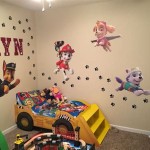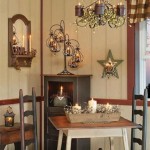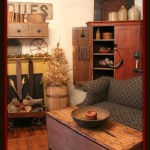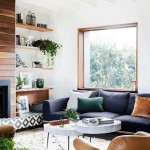How to Decorate a Boy's Dorm Room
Decorating a dorm room, especially for a male student, presents a unique set of challenges and opportunities. The goal is to transform a small, often sterile space into a personalized and functional living environment conducive to studying, relaxation, and socializing. This transformation requires careful planning and execution, balancing aesthetic preferences with practical considerations. This article provides guidance on effectively decorating a boy's dorm room, focusing on key areas to achieve a well-designed and comfortable space.
Maximizing Space and Functionality
Dorm rooms are notoriously small, making space optimization a primary concern. Every item brought into the room should serve a purpose, and furniture arrangement should prioritize functionality. Vertical space is often underutilized, so exploring storage solutions that take advantage of wall height is crucial.
One strategy is to invest in multi-functional furniture. A futon or convertible sofa can serve as both seating and a guest bed, maximizing floor space. Storage ottomans provide seating and discreet storage for blankets, pillows, or extra clothes. A rolling cart can be used as a bedside table, a storage unit, or even a mobile snack station.
Under-bed storage containers are essential for maximizing space. These can be used to store out-of-season clothing, extra bedding, or textbooks. Some companies offer specialized containers designed to fit under dorm beds, optimizing accessibility and organization.
Wall-mounted shelves are another excellent solution for utilizing vertical space. They can house books, decorations, and personal items without taking up valuable floor space. Consider using floating shelves for a minimalist look or shelves with brackets for added support. A whiteboard or corkboard mounted on the wall can serve as a visual reminder for assignments, deadlines, and important events. It also provides a space for displaying photos or artwork.
A well-organized desk is critical for academic success. Invest in desk organizers such as pen holders, file trays, and small drawers to keep the desk clutter-free. A monitor stand can raise the computer screen to eye level, improving posture and reducing neck strain. Consider a desk lamp with adjustable brightness settings to provide adequate lighting for studying at night.
Folding or collapsible storage solutions are ideal for items that are not used frequently. Laundry hampers, storage bins, and even collapsible chairs can be easily stored away when not in use, freeing up valuable space. Over-the-door organizers are also useful for storing shoes, toiletries, or other small items.
When arranging furniture, avoid blocking natural light sources. Position the desk near a window to take advantage of natural light during the day. If possible, arrange the bed so that it does not obstruct the flow of traffic in the room. Creating clear pathways will make the room feel more spacious and less cluttered.
Furthermore, consider the room's layout and any existing built-in features. Some dorm rooms have closets, while others have built-in shelves or drawers. Utilize these features to their full potential before adding additional storage solutions. A well-organized closet can significantly reduce clutter and free up space in the rest of the room.
Personalizing the Space with Style
While functionality is important, creating a personalized space that reflects individual interests and style is equally essential. A dorm room should be a place where a student feels comfortable and inspired. This can be achieved through carefully selected decorations, color schemes, and personal touches.
Choosing a color scheme is a fundamental step in personalizing the space. Neutral colors such as gray, beige, or white can serve as a versatile backdrop for adding pops of color. Accent colors can be introduced through bedding, curtains, throw pillows, and wall decorations. Consider the psychological effects of colors when making choices. Blue and green are often associated with calmness and relaxation, while yellow and orange can evoke feelings of energy and creativity.
Wall decor is a key element in transforming a sterile dorm room into a personalized space. Posters, prints, and artwork can reflect individual interests and create a focal point in the room. Consider using removable adhesive strips to avoid damaging the walls. Tapestries are another popular option for adding color and texture to the walls. They are lightweight, easy to hang, and can be easily removed without leaving any residue.
Photographs are a personal touch that can make a dorm room feel more like home. Create a photo collage on the wall or display photos in frames on the desk or shelves. Consider using a string of fairy lights to hang photos, creating a warm and inviting atmosphere.
Adding plants to the dorm room can bring life and vibrancy to the space. Plants can also improve air quality and create a more relaxing environment. Choose low-maintenance plants such as succulents, snake plants, or ZZ plants, which are easy to care for and can thrive in low-light conditions. Consider using decorative pots to add a touch of style.
Bedding is another important element in personalizing the dorm room. Choose a duvet cover or comforter set that reflects individual style and color preferences. Add throw pillows and a comfortable blanket to create a cozy and inviting bed. A bed skirt can hide under-bed storage containers and add a touch of sophistication.
Window treatments can also significantly impact the look and feel of the dorm room. Consider using curtains or blinds to control the amount of natural light entering the room and to provide privacy. Choose curtains or blinds that complement the color scheme and style of the room.
Personal items such as books, collectibles, and souvenirs can add character and personality to the dorm room. Display these items on shelves or the desk to create a space that reflects individual interests and experiences. Be mindful of clutter and avoid overcrowding the space with too many items.
Creating a Comfortable and Functional Environment
A dorm room should be a comfortable and functional environment that supports academic success and personal well-being. This involves paying attention to factors such as lighting, temperature, and acoustics. Addressing these factors can significantly improve the overall quality of the living space.
Lighting is a crucial aspect of creating a comfortable and functional environment. Dorm rooms often have inadequate lighting, so it is essential to supplement the existing lighting with additional lamps. A desk lamp is essential for studying and reading. A floor lamp can provide ambient lighting for the room. Consider using lamps with adjustable brightness settings to customize the lighting to individual needs.
Temperature control is another important factor to consider. Dorm rooms can often be too hot or too cold, depending on the time of year. A small fan can help circulate air and keep the room cool during warmer months. A space heater can provide supplemental heat during colder months. Consider using a programmable thermostat to regulate the temperature automatically.
Acoustics can also impact the comfort and functionality of the dorm room. Dorm rooms can often be noisy, especially during peak hours. Consider using earplugs or noise-canceling headphones to block out distractions while studying or sleeping. Adding soft furnishings such as rugs, curtains, and tapestries can help absorb sound and reduce echo in the room.
Ergonomics is another important consideration for creating a comfortable and functional environment. Ensure that the desk is at the correct height and that the chair provides adequate support. Consider using a monitor stand to raise the computer screen to eye level, improving posture and reducing neck strain. Take breaks frequently to stretch and move around to prevent fatigue and discomfort.
Maintaining cleanliness and organization is essential for creating a comfortable and functional environment. Make a habit of regularly cleaning the dorm room and decluttering the space. A clean and organized environment can reduce stress and improve productivity. Consider creating a cleaning schedule to stay on top of chores.
Creating a dedicated study space is crucial for academic success. Designate a specific area in the dorm room for studying, free from distractions. Ensure that the study space is well-lit, comfortable, and organized. Keep all necessary study materials within easy reach. Avoid studying in bed, as this can lead to drowsiness and reduced focus.
Establishing a routine is essential for maintaining a comfortable and functional environment. Set regular sleep and wake times to regulate the body's natural sleep-wake cycle. Create a schedule for studying, eating, and socializing. Sticking to a routine can help improve productivity and reduce stress.

Boys Dorm Room Decor And Organizing Essentials Dimples Tangles

Triple Dorms College Dorm Room Decor Diy Designs

15 Creative Dorm Room Ideas For Guys

The Ultimate Dorm Room Ideas For Guys

15 Cool Dorm Rooms For Guys Raising Teens Today

15 Cool Dorm Room Ideas For Guys They Can Easily Copy

Boys Dorm Room Decor And Organizing Essentials Dimples Tangles

17 Totally Rad Dorm Ideas For Guys Room Designs Decor Mens

Guys College Dorm Room Setup And Decor Ideas East Ina University

Boys Dorm Room Decor And Organizing Essentials Dimples Tangles







